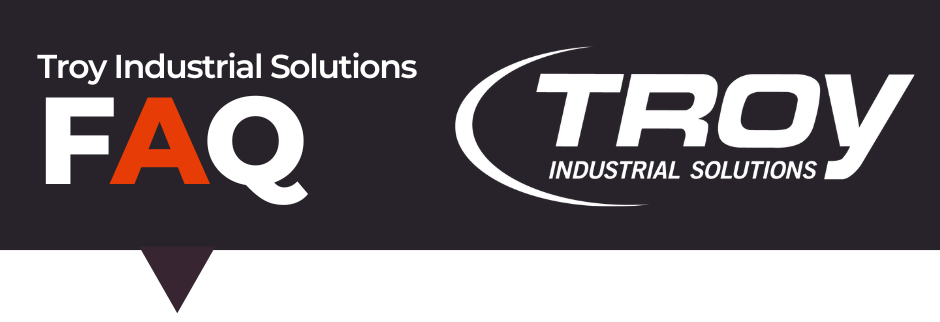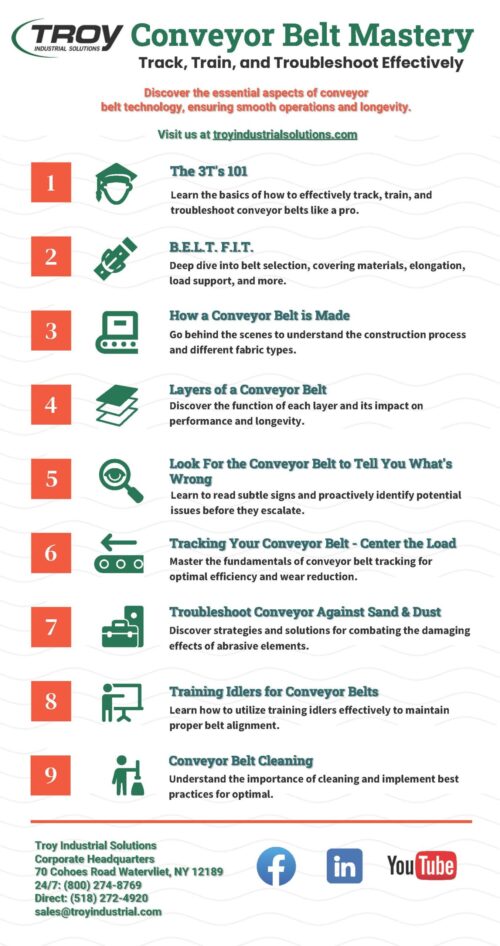Conveyor Belt Maintenance &
Common Conveyor Belt Problems
Q: Why is proper training important for belt conveyor operations?
A: Proper training is crucial for safety and efficiently operating belt conveyor systems. It ensures that operators and maintenance personnel know the system’s components, understand the operational procedures and identify and respond to potential hazards. Training also covers correctly using control sysytems and emergency stop mechanisms, reducing the risk of accidents and downtime.
Q: What common issues can arise during belt conveyor operations, and how can they be troubleshooted?
A: Common issues include belt misalignment, slippage, blockages, and wear and tear on components. Troubleshooting steps include:
-
Belt Misalignment: Check for debris accumulation, improper loading, or worn idlers and adjust or clean as necessary.
-
Slippage: Ensure proper belt tension and inspect the drive pulley for wear. Adjust tension or replace the pulley lagging if needed.
-
Blockages: Inspect and clean chutes and transfer points to prevent material buildup.
-
Wear and Tear: Regularly inspect the belt and components, replacing parts showing damage or excessive wear.





